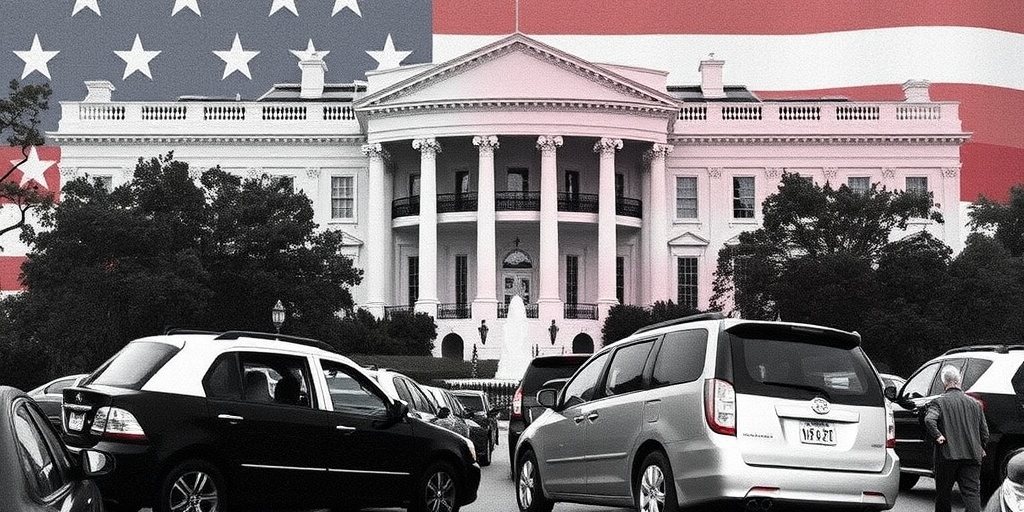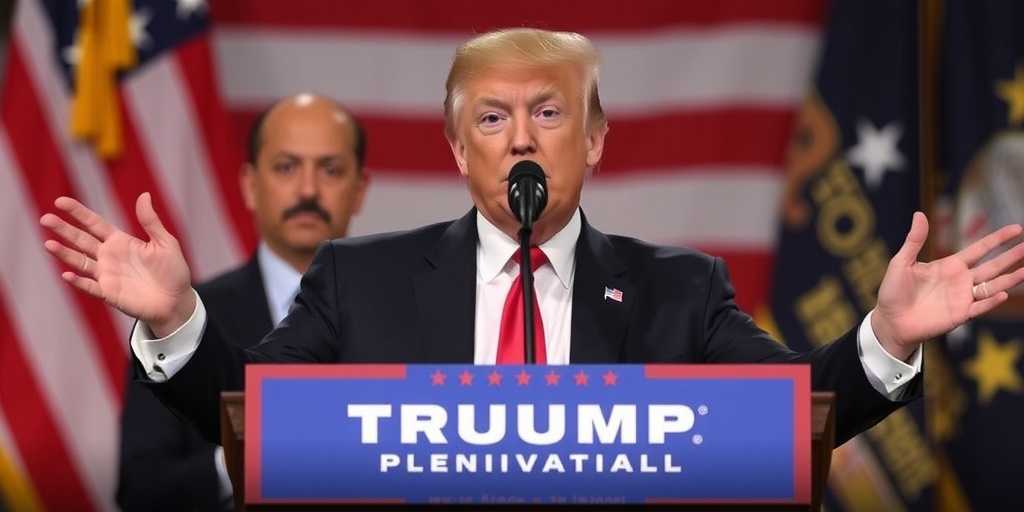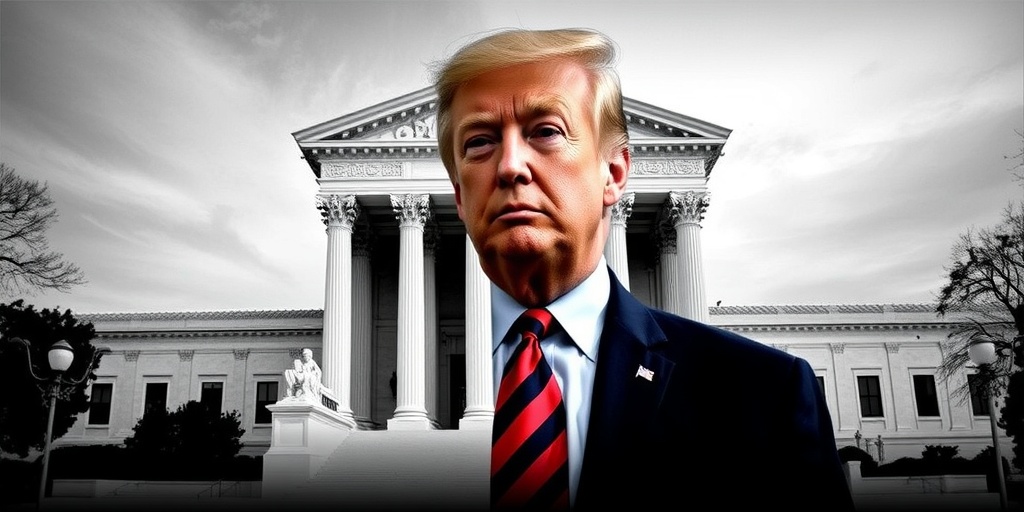Now Reading: Trump’s Greenland Strategy: Persuasion Over Invasion
-
01
Trump’s Greenland Strategy: Persuasion Over Invasion
Trump’s Greenland Strategy: Persuasion Over Invasion

U.S. Pursues Formal Plan to Acquire Greenland from Denmark
In a surprising shift from rhetoric to formal policy, the Biden administration is actively pursuing President Trump’s long-standing goal of acquiring Greenland, an Arctic island currently under Danish control. This initiative marks a significant escalation in U.S. interest in Greenland, which has gained economic and strategic importance as climate change continues to melt Arctic ice.
President Trump has long articulated his desire to claim Greenland for the United States, and with warming temperatures opening new avenues for resource extraction and shipping routes, the Arctic island’s allure has increased. Greenland, spanning an impressive 836,330 square miles, represents what could be one of the largest real estate acquisitions in history, appealing to Trump’s background as a businessman and developer.
Despite the Trump administration’s ambitions, Danish officials have expressed their firm resistance, asserting that Greenland is not for sale, and its status cannot be negotiated. However, Trump remains resolute, publicly stating, “We need Greenland for national security and even international security, and we’re working with everybody involved to try and get it.”
The National Security Council (NSC) has been mobilized, meeting regularly to turn Trump’s vision into actionable policy. However, specifics of the plan remain unclear. Sources indicate that while concerns over military action were initially considered, the NSC has largely focused on persuasion rather than coercion. The administration aims to convince the population of Greenland, which numbers around 57,000, to express a desire to join the United States.
To achieve this goal, Trump’s advisors have suggested launching advertising and social media campaigns aimed at influencing Greenlandic public opinion. A recent election in Greenland revealed an uphill battle: a political party advocating for closer ties to the U.S. secured only a quarter of the vote.
The U.S. messaging strategy surprisingly includes an appeal to the shared heritage between Greenland’s Inuit population and Alaska’s Native Americans. Former national security officials have noted that the Inuit of Greenland and those in Alaska share historical ties that could form a basis for solidarity.
In addition to diplomatic overtures, Trump’s administration is reportedly discussing financial incentives for Greenlanders. Instead of the $600 million annual subsidy provided by Denmark, a proposal has surfaced to offer approximately $10,000 annually per Greenlander. Officials believe this could be offset through anticipated revenues from Greenland’s vast mineral wealth, which includes rare earth minerals, copper, gold, uranium, and oil.
Despite these arguments, experts caution against the simplicity of profiting from mining in Greenland’s harsh environment. Furthermore, justifying significant expenditures to American taxpayers while also imposing budget reductions has proven to be a contentious issue.
Trump’s enthusiasm for acquiring Greenland is not entirely new; he attempted to engage national security officials on this topic during his first term. Following public speculation, however, Greenlandic leaders expressed their disapproval, causing the administration to back away. Nevertheless, Trump’s resolve has sharpened since the recent elections, with him now insisting to aides, “Let’s get it done.”
The National Security Council has highlighted the strategic importance of Greenland, with spokesman Brian Hughes affirming that Mr. Trump is confident that Greenlanders would be better protected under U.S. governance against modern Arctic threats. Hughes indicated that recent visits by high-ranking officials to Greenland are part of a deliberate effort to foster closer ties.
Experts in international relations maintain that the idea of closer relations between the U.S. and Greenland could be more plausible than initially perceived. The realities of climate change complicate the current geopolitical landscape, as melting ice opens new shipping routes and increases access to natural resources, prompting interest from not just the United States but also Chinese and Russian military forces.
However, these aggressive U.S. ambitions have drawn criticism and raised concerns of imperialism. Some world observers have expressed alarm at Trump’s statements regarding Greenland, framing them alongside his broader assertive foreign policy vision that includes comments about reclaiming the Panama Canal and potentially integrating Canada into the U.S.
Historical precedents exist for U.S. interest in Greenland; previously, the Truman administration offered Denmark a billion dollars for the island in 1946, amid fears of potential Nazi threats during World War II. This history underscores an ongoing, albeit fraught, interest in Greenland’s strategic value.
Today, Danish leaders are not only concerned about the ramifications for Greenland’s autonomy but also about how U.S. pressure tactics might affect longstanding alliances. Prime Minister Mette Frederiksen articulated these concerns during a recent visit to Greenland, emphasizing the need for Denmark and Greenland to determine their fate independently.
Amidst strong Danish resistance, the Trump administration appears committed to courting the Greenlandic populace, emphasizing their right for self-determination while asserting a desire to foster goodwill and prosperity through a potential partnership with the United States. As Trump continues to press forward with this ambitious plan, the final outcome remains shrouded in uncertainty, but it poses significant implications for international relations and the future of Greenland.
Stay Informed With the Latest & Most Important News
Previous Post
Next Post
-
 01New technology breakthrough has everyone talking right now
01New technology breakthrough has everyone talking right now -
 02Unbelievable life hack everyone needs to try today
02Unbelievable life hack everyone needs to try today -
 03Fascinating discovery found buried deep beneath the ocean
03Fascinating discovery found buried deep beneath the ocean -
 04Man invents genius device that solves everyday problems
04Man invents genius device that solves everyday problems -
 05Shocking discovery that changes what we know forever
05Shocking discovery that changes what we know forever -
 06Internet goes wild over celebrity’s unexpected fashion choice
06Internet goes wild over celebrity’s unexpected fashion choice -
 07Rare animal sighting stuns scientists and wildlife lovers
07Rare animal sighting stuns scientists and wildlife lovers





















